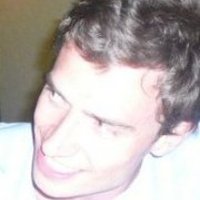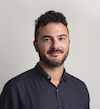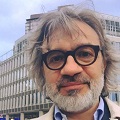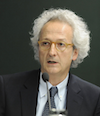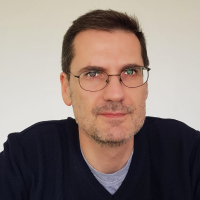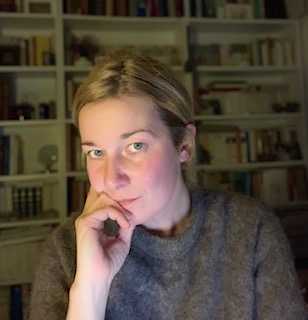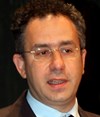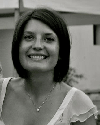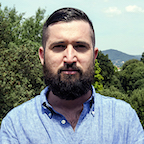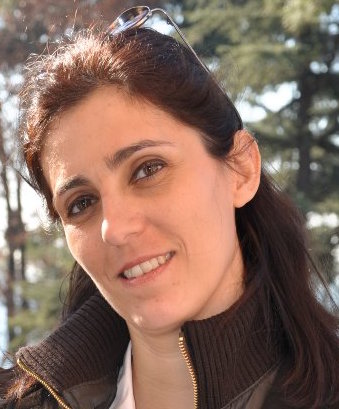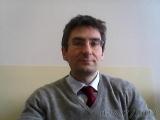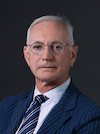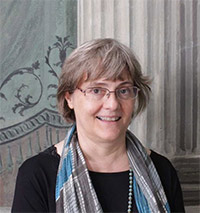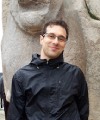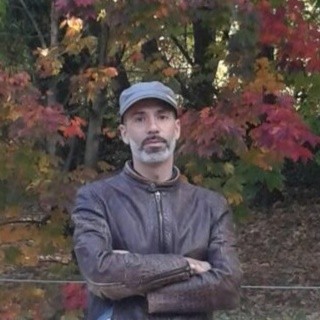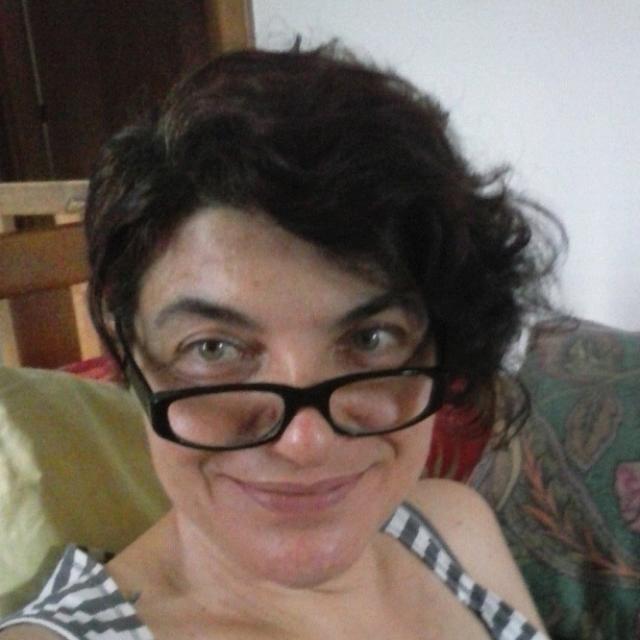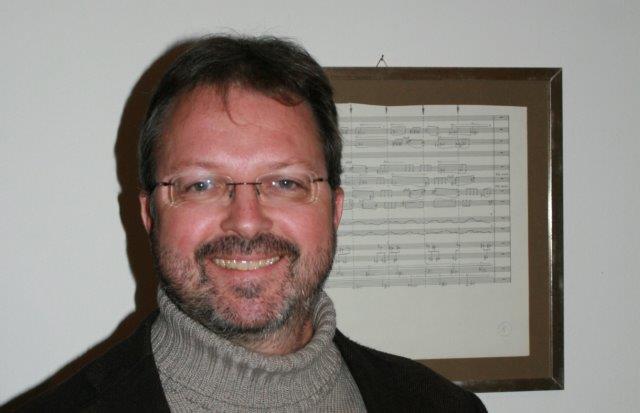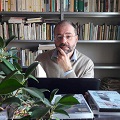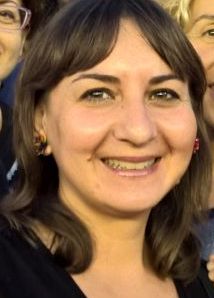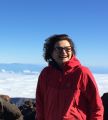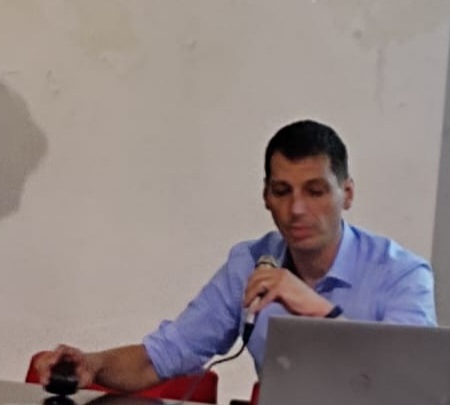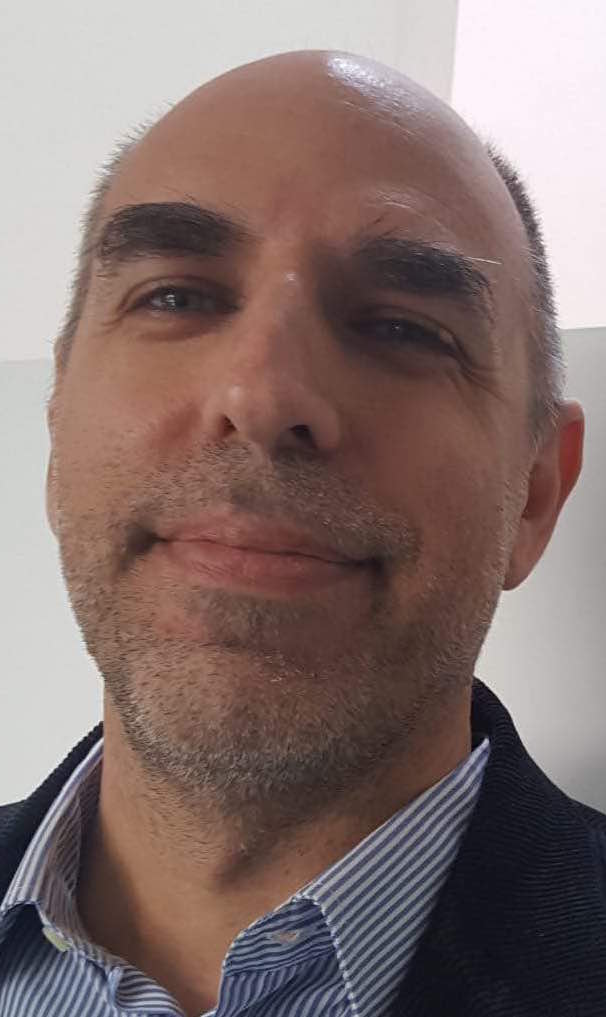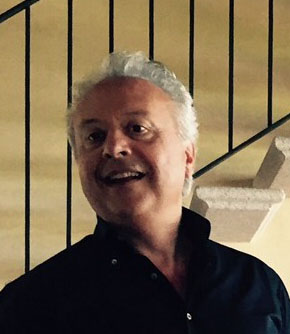Studying at the University of Verona
Here you can find information on the organisational aspects of the Programme, lecture timetables, learning activities and useful contact details for your time at the University, from enrolment to graduation.
Academic calendar
The academic calendar shows the deadlines and scheduled events that are relevant to students, teaching and technical-administrative staff of the University. Public holidays and University closures are also indicated. The academic year normally begins on 1 October each year and ends on 30 September of the following year.
Course calendar
The Academic Calendar sets out the degree programme lecture and exam timetables, as well as the relevant university closure dates..
| Period | From | To |
|---|---|---|
| Sem 1A | Sep 23, 2019 | Oct 31, 2019 |
| Sem 1B | Nov 11, 2019 | Jan 11, 2020 |
| Sem 2A | Feb 17, 2020 | Mar 28, 2020 |
| Sem 2B | Apr 6, 2020 | May 30, 2020 |
| Session | From | To |
|---|---|---|
| Sessione d'esame invernale | Jan 13, 2020 | Feb 15, 2020 |
| Sessione d'esame estiva (gli esami sono sospesi durante la sessione di laurea) | Jun 3, 2020 | Jul 25, 2020 |
| Sessione d'esame autunnale | Aug 24, 2020 | Sep 19, 2020 |
| Session | From | To |
|---|---|---|
| Sessione di laurea estiva | Jul 6, 2020 | Jul 11, 2020 |
| Sessione di laurea autunnale 19-20 | Nov 2, 2020 | Nov 7, 2020 |
| sessione di laurea invernale 19-20 | Apr 7, 2021 | Apr 13, 2021 |
| Period | From | To |
|---|---|---|
| Festa di Ognissanti | Nov 1, 2019 | Nov 1, 2019 |
| Sospensione delle lezioni | Nov 2, 2019 | Nov 2, 2019 |
| Festa dell'Immacolata | Dec 8, 2019 | Dec 8, 2019 |
| Vacanze di Natale | Dec 23, 2019 | Jan 6, 2020 |
| Vacanze di Pasqua | Apr 10, 2020 | Apr 14, 2020 |
| Festa della Liberazione | Apr 25, 2020 | Apr 25, 2020 |
| Festa del Lavoro | May 1, 2020 | May 1, 2020 |
| Sospensione delle lezioni | May 2, 2020 | May 2, 2020 |
| Festa del Santo Patrono | May 21, 2020 | May 21, 2020 |
| Sospensione delle lezioni | May 22, 2020 | May 23, 2020 |
| Festa della Repubblica | Jun 2, 2020 | Jun 2, 2020 |
| Vacanze estive | Aug 10, 2020 | Aug 15, 2020 |
Exam calendar
Exam dates and rounds are managed by the relevant Culture and Civilisation Teaching and Student Services Unit.
To view all the exam sessions available, please use the Exam dashboard on ESSE3.
If you forgot your login details or have problems logging in, please contact the relevant IT HelpDesk, or check the login details recovery web page.
Should you have any doubts or questions, please check the Enrollment FAQs
Academic staff
 liampaul.benison@univr.it
liampaul.benison@univr.it
 riccardo.bertolazzi@univr.it
riccardo.bertolazzi@univr.it
 luca.bochicchio@univr.it
luca.bochicchio@univr.it
 dario.donetti@univr.it
dario.donetti@univr.it
 stefania.pontrandolfo@univr.it
stefania.pontrandolfo@univr.it
Study Plan
The Study Plan includes all modules, teaching and learning activities that each student will need to undertake during their time at the University.
Please select your Study Plan based on your enrollment year.
1° Year
| Modules | Credits | TAF | SSD |
|---|
1 module to be chosen among the following2° Year activated in the A.Y. 2020/2021
| Modules | Credits | TAF | SSD |
|---|
1 module to be chosen among the following2 modules to be chosen among the following3 modules to be chosen among the following3° Year activated in the A.Y. 2021/2022
| Modules | Credits | TAF | SSD |
|---|
1 module to be chosen among the following1 module to be chosen among the following3 modules to be chosen among the following| Modules | Credits | TAF | SSD |
|---|
1 module to be chosen among the following| Modules | Credits | TAF | SSD |
|---|
1 module to be chosen among the following2 modules to be chosen among the following3 modules to be chosen among the following| Modules | Credits | TAF | SSD |
|---|
1 module to be chosen among the following1 module to be chosen among the following3 modules to be chosen among the following| Modules | Credits | TAF | SSD |
|---|
Legend | Type of training activity (TTA)
TAF (Type of Educational Activity) All courses and activities are classified into different types of educational activities, indicated by a letter.
History of Modern Art (i+p) - I MODULO PARTE (I) (2020/2021)
Teaching code
4S02161
Teacher
Credits
6
Also offered in courses:
- History of Modern Art (i) of the course Bachelor’s degree in Humanities
- History of Modern Art (i+p) - I MODULO PARTE (I) of the course Bachelor’s degree in Humanities
Language
Italian
Scientific Disciplinary Sector (SSD)
L-ART/02 - HISTORY OF MODERN ART
Period
CuCi IIA dal Feb 15, 2021 al Apr 1, 2021.
To show the organization of the course that includes this module, follow this link: Course organization
Learning outcomes
Learning Objectives: General knowledge of the main phenomena in Modern Art, through a theoretical approach which helps acquire specific knowledge) and through a practical approach (that support the acquisition of personal orientation skills): the purpose is to improve the reading ability of the works of art.
KNOWLEDGE:
1. to outline a distinction between the various periods of Modern Art History;
2. to establish connections between the protagonists of Modern Art History;
3. to highlight the importance of the historical and cultural context in regard to formation of the protagonists of the history of modern art;
4. to highlight the specificities of the protagonists and phenomena in the history of modern art;
5. to provide useful methodological tools in order to understand the complexety of the history of modern art;
SKILLS
6. to develop an active approach towards the analysis of works in the history of modern art;
7. to acquire a correct periodization of the phenomena related to the history of modern art;
8. to memorize the mainworks of the protagonists of the history of modern art;
9. to be able to recognize the main iconographies of modern art history;
10 to learn the right way to expose the issues of modern art history correctly and appropriately.
Program
Course Content: the course provides an overview of the major artistic movements in Italy, between the beginning of the Fifteenth century (Tardogotico and Renaissance) and the the beginning of the Nineteenth century(Neoclassicism and Romanticism). In this course, it is impossible to analyse all aspects of this period, but some readings specimens will be proposed, especially connected with the taste and with the collecting and cultural contexts, also in a perspective of a methodological interrelationship.
TOPICS:
a. Cultural phenomena in Italy and in Europe from the early Renaissance to Neoclassicism;
b. The protagonists of these cultural phenomena;
c. The main works of these artists.
Books: S. Settis, T. Montanari, Arte. Una storia Naturale e civile, Einaudi: vol. 3 (from the first to the last chapter), vol. 4, up to page 349; G. Sciolla, Studiare l’arte: metodo, analisi e interpretazione delle opere e degli artisti, Utet. It is expressly required the visual knowledge of all the images in the text of Settis and Montanaris, which will be subject to examination. For those who have never studied art history, we recommend to read the book by H. Gombrich, The story of Art, Phaidon.
Teaching methods: powerpoint, videos and (possibly) conferences. To improve the personal ability to read the works of art (particulary paintings), the (non-compulsory) attendance of the "Orientation Seminar for the reading of the pictorialworks" (online information) is recommended.
| Author | Title | Publishing house | Year | ISBN | Notes |
|---|---|---|---|---|---|
| Salvatore Settis Tomaso Montanari | Arte. Una storia Naturale e civile | Einaudi | 2019 | ||
| G.C. Sciolla | Studiare l'arte. Appunti sul metodo storico-artistico | Utet | 2001 |
Examination Methods
The exam of Modern Art History (I) may be conducted in accordance with either one of the two following options.
The first option (“normal” or “conventional” assessment method) consists of a written test and the examination will take place in the classroom.
The test is broken down into three parts, which will include:
a) Test of recognition of twenty images of artworks:
Twenty images are projected in sequence for one minute each while the student is required to complete a paper form with the following items for each image: the author, the title of the work, the date of execution (or the period, if the exact date is unknown), and – if possible – the location of the piece of artwork. All images come from (and can be found in) the reference textbook: S. Settis-T. Montanari, Arte: una storia naturale e civile. Vol. 3-4, Torino, Einaudi, 2019.
b) Answering in detail a question i.e expanding on a specific topic. The student is required to produce a written text within the given time of 40 minutes.
c) Answering a question, i.e. expanding on a more specific, focused topic. For this one, the student is required to produce a shorter written text within the given time of 20 minutes.
The overall test duration is 80 minutes.
Exam results will be published on the Professor's personal Announcements web page as soon as available, generally within a few days from the exam.
It should be noted that in the evaluation of the written texts (parts (b) and (c) of the exam), the form/style as well as the correct spelling of words and grammatical accuracy will be taken into careful consideration besides the content of the answers.
To obtain an overall positive mark and pass the exam (18/30 or higher), the student must correctly recognize at least ten images in section (a) and a passing grade must be assigned to the written texts in section (b) and (c).
The second option consists of an online multiple-choice test and is available if suggested/required by any specific circumstances or didactics purposes.
Students will be notified in advance if this option is available.
The exam will take place in one of the University's computer rooms, if possible, otherwise remotely, using a Zoom connection or any similar platforms.
The exam is broken down in two parts, as follows:
Part 1: Images recognition. A sequence of twenty images (slides) is displayed on the desktop computer (one at a time) and for each of them the student is required to answer a question regarding one aspect of the artwork (author, title, date, or period of execution, location). Four alternative answers are shown, among which only one is correct. All the images can be found in the textbook by Settis-Montanari.
Example:
SLIDE 1 – QUESTION: author of the artwork/painting:
1. X
2. Y
3. Z
4. None of them is correct
The expected time to complete this assignment is 7 minutes, i.e. an average of 20 seconds for each image.
Part 2: Quiz. The candidate is required to answer a row of forty questions presented as multiple-choice quizzes. Again, only one of the four alternative choices provided for each question is the correct answer. All answers can be found in the textbook by Settis-Montanari and in G. C. Sciolla, Studiare l’arte: metodo, analisi e interpretazione delle opere e degli artisti, Torino, UTET Università, 2010.
The complete test duration is 21 minutes.
At the end of the exam, students can view all the correct answers.
To obtain a positive mark and pass the exam (18/30 or higher), the student must score at least 35/60.
Exam results will be immediate, as test corrections are automatically processed by the platform the local DTP station is connecting to
Type D and Type F activities
| years | Modules | TAF | Teacher |
|---|---|---|---|
| 1° 2° 3° | Lectures "Musiche/Culture/Civiltà" | F |
Vincenzo Borghetti
(Coordinator)
|
| 1° 2° 3° | Musei civici Verona Conferences | F | Not yet assigned |
| 1° 2° 3° | C.T.G. Lectures | F |
Alessandra Zamperini
(Coordinator)
|
| 1° 2° 3° | Graphic and photographic documentation of the archaeological artefacts: from traditional drawings to digital sources | F |
Patrizia Basso
(Coordinator)
|
| 1° 2° 3° | Ephigraphy of production and distribution | F |
Alfredo Buonopane
(Coordinator)
|
| 1° 2° 3° | Introduction to the study of decorative arts | F |
Valerio Terraroli
(Coordinator)
|
| 1° 2° 3° | Presente e futuro del pianeta. economia, sostenibilità e politiche | F |
Gian Maria Varanini
(Coordinator)
|
| 1° 2° 3° | How to write your dissertation | F |
Alessandro Arcangeli
(Coordinator)
|
| 1° 2° 3° | Introductory seminar on art interpretation - BC | F |
Enrico Dal Pozzolo
(Coordinator)
|
| years | Modules | TAF | Teacher |
|---|---|---|---|
| 1° 2° 3° | Musei civici Verona Conferences | F | Not yet assigned |
| 1° 2° 3° | C.T.G. Lectures | F |
Alessandra Zamperini
(Coordinator)
|
| 1° 2° 3° | Graphic and photographic documentation of the archaeological artefacts: from traditional drawings to digital sources (Part II) | F |
Patrizia Basso
(Coordinator)
|
| 1° 2° 3° | Fai un giro in villa (1 cfu) | F |
Monica Molteni
(Coordinator)
|
| 1° 2° 3° | Workshop on classical archaeology | F |
Piergiovanna Grossi
(Coordinator)
|
| 1° 2° 3° | Laboratory of medieval archaeology | F |
Elisa Lerco
(Coordinator)
|
| 1° 2° 3° | Basic laboratory of data | F |
Maurizio Boscaini
(Coordinator)
|
| 1° 2° 3° | Educational workshop on bibliotherapy | F |
Marco Dalla Valle
(Coordinator)
|
| 1° 2° 3° | Workshop on prehistory and protohistory | F |
Anita Casarotto
(Coordinator)
|
| years | Modules | TAF | Teacher |
|---|---|---|---|
| 1° 2° 3° | Art Verona | F | Not yet assigned |
| 1° 2° 3° | Giovedì' culturali dell'ISSR I ciclo | F |
Tiziana Franco
(Coordinator)
|
| 1° 2° 3° | Giovedì' culturali dell'ISSR II ciclo | F |
Tiziana Franco
(Coordinator)
|
| 1° 2° 3° | Univero’ 2019 | F |
Tiziana Franco
(Coordinator)
|
| 1° 2° 3° | Urbs picta sulla storia dell’arte contemporanea | F | Not yet assigned |
| 1° 2° 3° | Urbs picta to be played - Video, immagine in movimento e videoinstallazione nella “generazione ottanta” | F | Not yet assigned |
Career prospects
Module/Programme news
News for students
There you will find information, resources and services useful during your time at the University (Student’s exam record, your study plan on ESSE3, Distance Learning courses, university email account, office forms, administrative procedures, etc.). You can log into MyUnivr with your GIA login details: only in this way will you be able to receive notification of all the notices from your teachers and your secretariat via email and soon also via the Univr app.
Graduation
List of theses and work experience proposals
| theses proposals | Research area |
|---|---|
| Ambiti di tesi | Art & Architecture - Art & Architecture |
| Stage | Research area |
|---|---|
| Lavorare in archivio | Various topics |

 +39 045802 8351
+39 045802 8351

